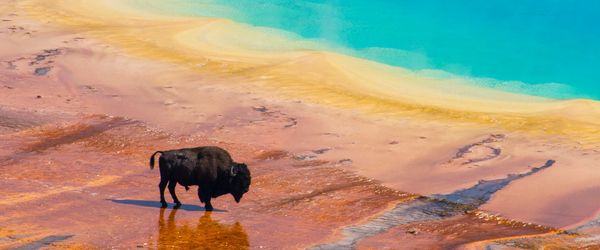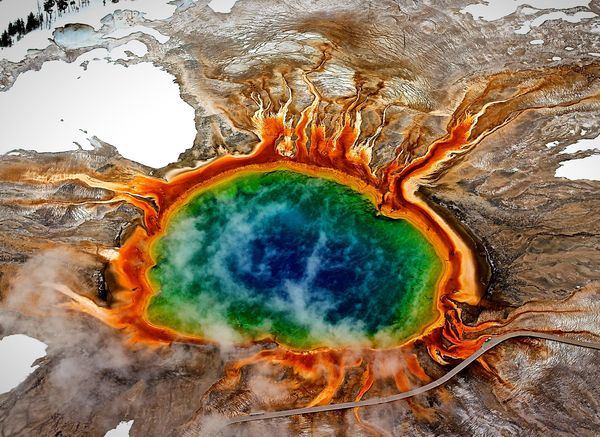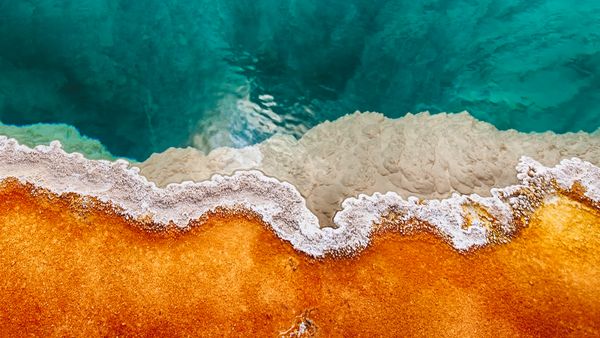
Natural eruption
A geyser is a rare hot spring that erupts and sends a force of water into the atmosphere. We take a look at the incredible science behind this natural phenomenon
Words Christopher Beanland
Photography Marie-Louise Mandi/EyeEm/Getty, Daniel Inskeep/Stocky, Megan Brady/istock, Bryan Mulllenix/Getty
Of all the Earth’s most dramatic geological spectacles, geysers and hot springs are surely the most eye-opening. Sure, waterfalls are often larger, but the explosive bursts of steam coming from geysers and the sharp colour of some hot springs, such as the remarkable Grand Prismatic Spring in Yellowstone National Park, Wyoming, USA, are piquant reminders of the power, beauty and majesty of the Earth. It’s too easy to forget that we are mere tenants resting on rock that reaches down miles. And this rock can create some truly epic sights when rain water simply filters through it. In the case of hot springs, the water falls into the rock and is heated by the hot lava that lies at the centre of the Earth. It then rises up and flows into pools when the geological conditions are right. It’s a rarity that only occurs in certain countries such as Chile, Dominica, the USA, Iceland and New Zealand.

The Grand Prismatic Spring is even more special – a rare diamond in this natural world of beauty. Not only does the hot water rise to the surface in spectacular style, but also an incredibly unlikely combination of microbial mats around the edge of the lake produces some spell-binding colours. The colours change depending on the minerals present and the seasons – reds, oranges, greens, yellows and in the centre a deep, mesmerising blue that almost defies belief, and must surely have made a potent impression on the settlers and fur trappers who spied it in the 1800s for the first time.

At 300 feet wide, it is the third largest hot spring in the world after Frying Pan Lake in New Zealand and Boiling Lake in Dominica. Tourists flock in their thousands to come and see it today, as with many other springs and geysers around the world. Some hot springs can be bathed in, feeding huge al fresco attractions, such as Iceland’s renowned Blue Lagoon. Some are too hot to even dip in a toe.
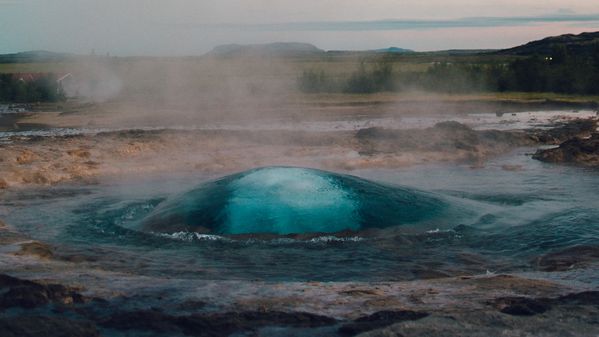
Geysers go one better than hot springs by ejecting steam. Surely, this must have inspired engineers who created the Victorian-age steam engines that powered the Industrial Revolution. As with hot springs, the process starts with snow and rainwater falling through rock, then becoming heated by lava and rising back up towards the surface. For a geyser to form, the water travels up through a layer of volcanic ash, dissolving the silica within this ash layer, which then deposits around rocky cavities and creates a constriction. It’s this constricted passage which causes the water to shoot to the surface as steam and erupt, sometimes 300 feet in the air. Because the geyser needs this silica to create a so-called ‘plumbing system’ of constrictions, geysers are normally found very near to volcanoes.
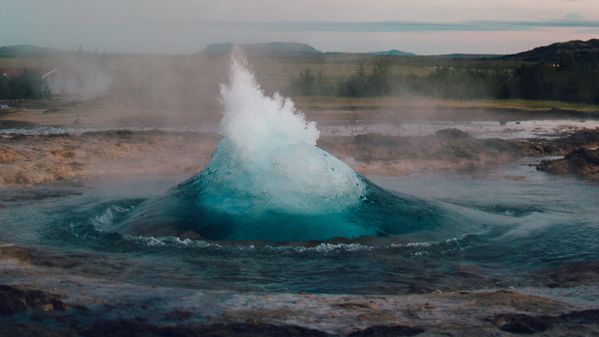
Dramatic geysers that go off with a bang are hugely popular attractions. Old Faithful – also in Yellowstone National Park – is one of the best known. It erupts regularly, sometimes taking two hours between going off and sometimes as little as 30 minutes. The nearby Steamboat Geyser doesn’t erupt as regularly but when it does it can shoot water in excess of 300 feet in the air. Iceland’s Great Geysir has been on record since the 1200s and was the first of these phenomena to be named a ‘geyser’ - gjosa is the Icelandic word for gush. New Zealand’s Lady Knox Geyser has soap dumped in it every morning to induce an eruption for excited Instagrammers gathered round. Japan’s Suwa Geyser is hugely popular and shoots over 150 feet. Next to it is the Suwa Lake hot spring where you can take the waters and warm up in winter. The biggest collection of geysers together is El Tatio in Chile, where 80 of them fire off, sometimes simultaneously, in a spectacular rock opera.

Whether to swim or just see, geysers and hot springs offer a chance to learn about the world beneath our feet and to witness the incredible feats the Earth is capable of when it starts showing off.
